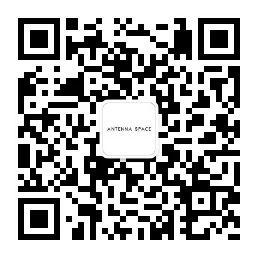6k(5760 x 1080)高清影像,5.1声道
55分46秒
刘窗
介绍
刘窗(b. 1978,天门)现生活和工作于上海。2001年,他于湖北美术学院获得学士学位。
刘窗的作品包括移动影像、雕塑、现成品和装置。他的作品通常将长时段的历史和生态弧线结合起来进行想象,追踪当代中国的社会、文化和经济转型。他编织了连接微观和宏观、过去和现在、虚构和现实的叙事,探讨了自然、传统、人口、尖端技术和社会经济体系的巨大而复杂的变化如何影响个人以及他们与整个世界的接触。
刘窗的作品曾在以下美术馆或机构展出:国立台湾美术馆(2025);蓬皮杜艺术中心(2024);Luma Westbau(2024);瑞士学院(2024);汉堡市立美术馆(2024);上海西岸美术馆(2024);香港M+博物馆(2024);日本丰田市立美术馆(2024);雅典国立当代艺术博物馆(2022);奥斯陆阿斯楚普费恩利现代艺术博物馆(2022、2017和2007);巴黎蓬皮杜艺术中心(2021、2020和2019);蓬皮杜艺术中心-梅茨馆(2021),巴塞尔当代艺术馆(2021);首尔市立美术馆(2021);上海当代艺术博物馆(2021和2014);东京都现代美术馆(2020);台北市立美术馆(2020);香港Para Site(2020、2016、2012和2009);新加坡南洋理工大学当代艺术中心(2022和2016);新加坡美术馆(2020);广州广东时代美术馆(2019、2018和2017);纽约古根海姆美术馆(2018);柏林世界文化宫(2016);里斯本贝拉多美术馆(2016);巴黎路易威登美术馆(2016);坦帕美术馆 (2014);北京尤伦斯当代艺术中心(2013); 伦敦白教堂美术馆(2012);上海民生现代美术馆(2011);都灵阿涅利美术馆(2010);纽约新美术馆(2009);马其顿当代艺术馆(2004);深圳何香凝美术馆(2003)。
刘窗最近参加的双年展和三年展包括有:to carry,第16届沙加双年展(2025);腹地动脉,第四届中国新疆国际艺术双年展(2024);雨后,第二届迪里耶双年展(2024);技术和工艺,第十五届吕勒奥艺术双年展(2022);增强智慧资本,蝴蝶在泥浆上嬉戏,第二届泰国双年展(2021);一次逃脱,第十一届首尔媒体城市双年展(2021);水体,第十三届上海双年展(2021);前沿心智,交融的激流,第三届广州移动影像三年展(2021);一园六季,加德满都三年展(2021);你和我不住在同一个星球,2020台北双年展(2020);地壳运动,第五届达卡艺术峰会(2020);永生,第五届乌拉尔工业双年展(2019);来自山和海的异人,第七届亚洲艺术双年展(2019);社会工厂,第十届上海双年展(2014);烧掉房子,第十届光州双年展(2014);知道不知道,第43界国际艺术家沙龙(2013);比耶稣年轻,第一届新美术馆三年展(2009)。
刘窗参加的电影节包括有: 38届汉堡国际短片电影节(2022),32届新加坡国际电影节(2021),第66届柏林国际电影节(2016),第7届布切斯特国际实验电影节(2016),第5届基辅国际短片电影节(2016),第8届Crosstalk录像艺术节(2016),印度尼西亚Arkipel国际纪录&实验电影节(2016)。
刘窗的作品被以下公共机构收藏:伦敦泰特现代艺术馆,巴黎蓬皮杜艺术中心,香港M+博物馆,奥斯陆阿斯楚普费恩利现代艺术博物馆,阿尔勒卢玛艺术基金会,旧金山卡蒂斯特艺术基金会,迈阿密鲁贝尔家族基金会,巴黎DSL,纽约瓦尔特收藏,广州广东省美术馆,香港K11艺术基金会,瑞士西客收藏,北京新世纪艺术基金会,北京泰康空间。
-
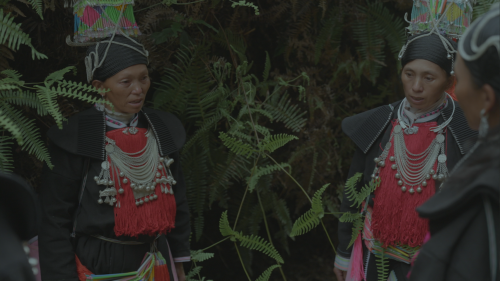
刘窗,锂矿湖与复音岛,2023
作品信息Information -

刘窗,锂矿湖与复音岛,2020
三通道录像,彩色,有声
35分55秒作品信息Information -
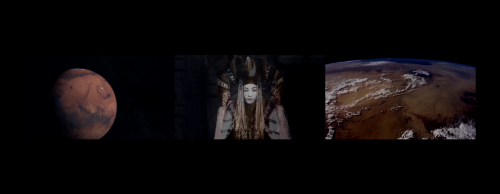
刘窗,比特币矿和少数民族田野录音,2018
6k(5760 x 1080),彩色,有声
40分钟“全球都市”全都市国际艺术双年展委任制作
由毛继鸿艺术基金会支持刘窗的录像装置在技术、基础设施、生态和金融的历史中构建了一个推测性的旅程,将其与人类学知识和科幻小说的全球想象力交织在一起。在刘窗的实地考察中,艺术家观察到大量位于中国西部农村地区废弃水电站内的比特币矿场,这些地区也是许多少数民族的家园。将资本投资问题置于科学和流行文化的历史中,该作品建立了横向的认识论联系,并提醒我们,尖端技术的部署仰仗生态和少数民族的智慧。刘窗还探讨了基础设施和资本的发展是如何使这些智能变得脆弱的,以此强调了特殊和地球的相关命运。 (by Cosmopolis 2#, Centre Pompidou)
作品信息Information -

刘窗,声音是货币吗?,2021
2k,彩色,立体声
19分43秒作品信息Information -
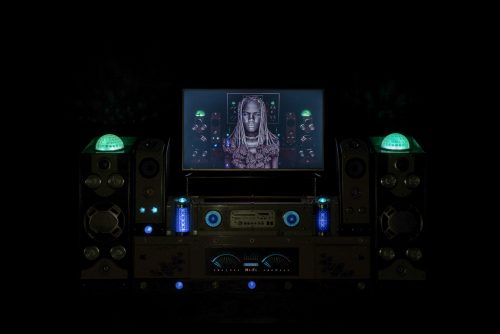
刘窗,饱食终日的我,2018
家庭娱乐一体化系统,包括胡桃木柜子、创星牌电视、功放、PC电脑、七个JBL牌全频喇叭和一个低音喇叭、7.1声道全景声系统、塑料灯罩、LED灯光控制系统和带铝合金架子的镜子。
视频文件:28分37秒
柜子尺寸:2300 x 1550 x 500 mm;镜子和架子尺寸:7200 x 3000 x 500 mm x 2
作品信息Information -

刘窗,经济特区,2018
2k,彩色,立体声
25分56秒作品信息Information -

刘窗,抑花一号,2015
2k,彩色,立体声
4分56秒
Edition of 6+2AP作品信息Information -
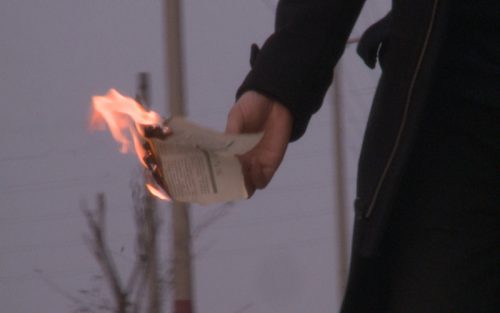
刘窗,无题(节日),2015
录像,彩色,有声
5分14秒作品信息Information -
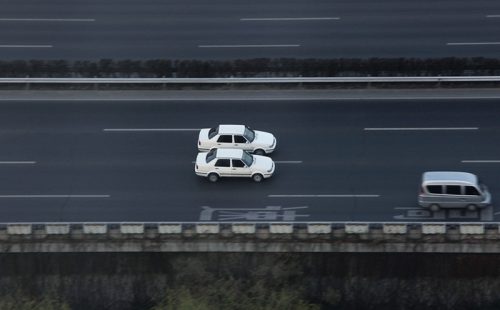
刘窗,无题(舞伴),2010
单通道高清录像,彩色,立体声
11分30秒作品信息Information -
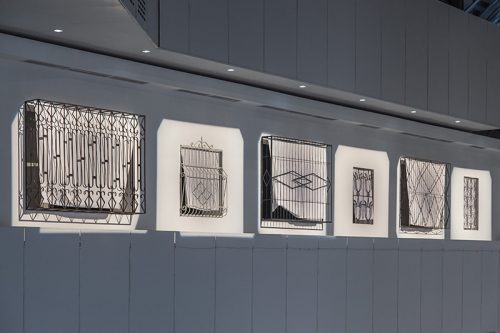
刘窗,被分割的风景,2014
钢结构,棉布,风扇和投影
根据现场尺寸制作
由第十届上海双年展和上海当代艺术博物馆委任制作作品信息Information -
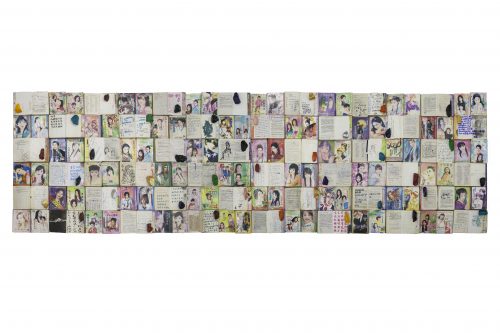
刘窗,爱情故事之九,2016
旧书
尺寸可变作品信息Information -
-500x2112.jpg)
刘窗,收购你身上的所有(刘海发),2013
T-shirt,内裤,牛仔裤,一双袜子,一双皮鞋,钥匙两枚,项链,钥匙扣,钥匙环,手机,手机充电器,钱包,硬币四枚,九张钞票,六张名片,身份证,大头照八张,电信卡两张,照片两张,圆珠笔,照片袋两个,水果刀,带包装的小刀,纸巾包,购物小票,送货单,宣传单张,售后服务卡,带名片的宣传单,塑料文件夹,银行进账单四张,送货单两张,登记表,客户联络单,手抄单据,信封,笔记本,快递单,发票,手写收据,税务登记证,化验单五张,银行资料单两张,合作协定书,手写清单,产品安全说明书,产品价格单五张,客户资料表四张,催款单,保险单,税务凭证,客户访谈记录表,报价单两张,报纸,字迹模糊纸页十九张
120 x 504 x 20 cm
作品信息Information -
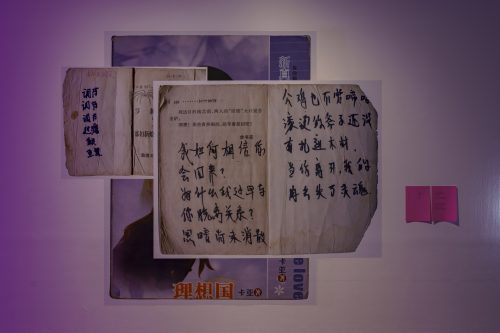
刘窗,爱情故事之言情小说,2013/2021
数码喷墨打印
尺寸可变作品信息Information -
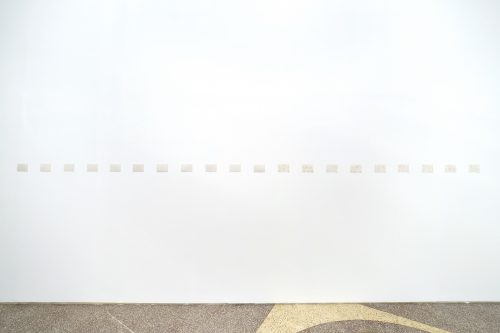
刘窗,无名影集,2008
柯达皇家相纸,柯尼卡永生100相纸,富士晶彩相纸
5寸(9×12.5厘米),共90张作品信息Information -
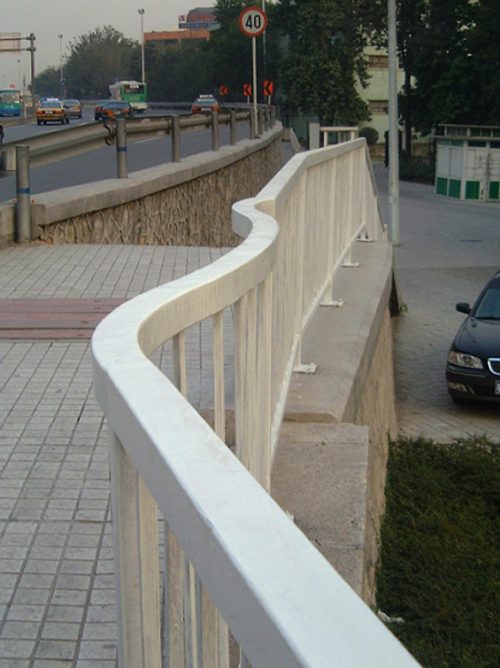
刘窗,Railing,2003
钢结构
展览现场:何香凝美术馆,深圳,中国
作品信息Information -
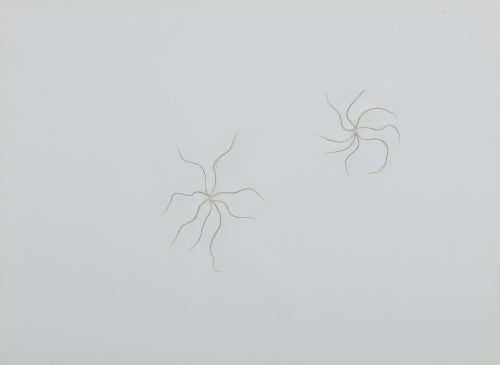
刘窗,野草集,2003
照片:M+,香港
毛发,胶水,铜版纸
21×29.4cm
作品信息Information -
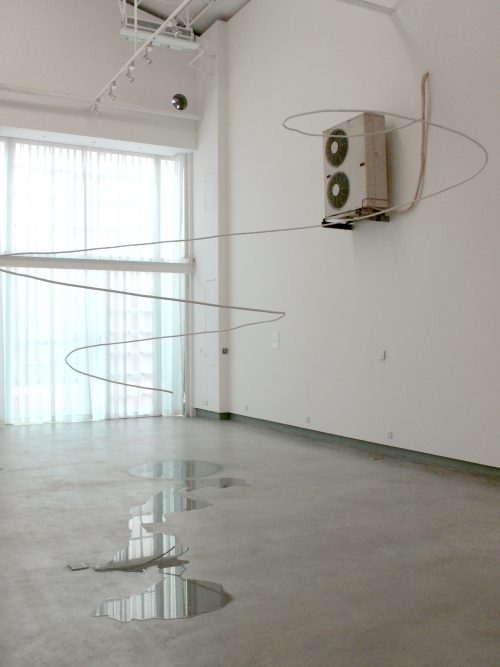
刘窗,无题(汗史)1,2007
空调机
尺寸可变
展览现场:J&Z gallery,深圳
作品信息Information -
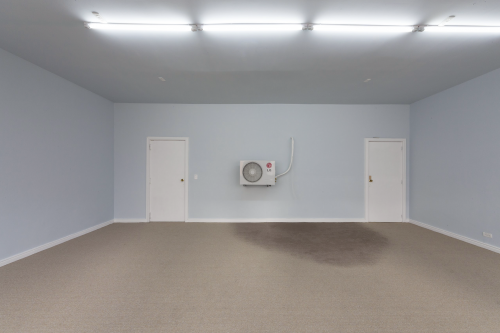
刘窗,无题(汗史)2,2007
空调机
尺寸可变
展览现场:Edificio Antioquia,麦德林,哥伦比亚
知道不知道,第43界国际艺术家沙龙
作品信息Information -
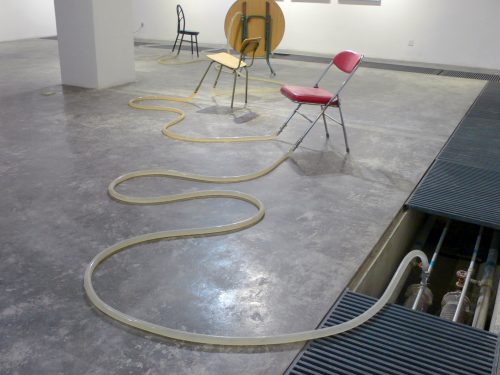
刘窗,无题(无名河)Ⅱ,2008
水管、椅子、桌子
尺寸可变
展览现场:T Space,北京
作品信息Information -

刘窗,她在这儿!,2007
观念艺术
作品信息Information -
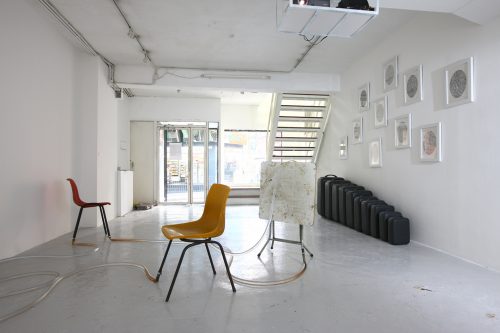
刘窗,无题(无名河)Ⅲ,2008
水管、椅子、桌子
尺寸可变
展览现场:Para-site Space,香港
作品信息Information -
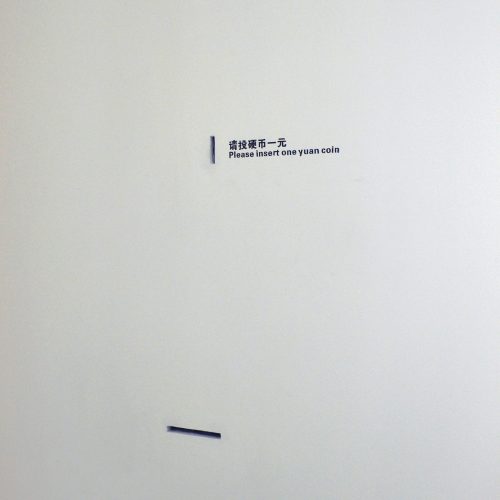
刘窗,过去的机会,2008
装置
尺寸可变
展览现场:当代唐人艺术中心,北京
作品信息Information -
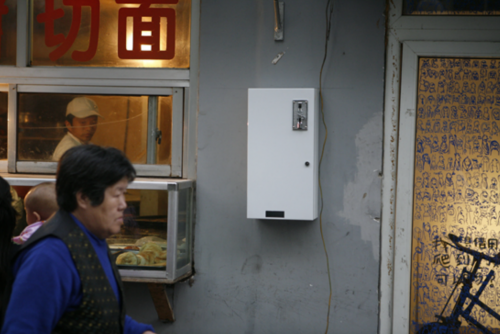
刘窗,过去的机会,2010
装置
尺寸可变
展览现场:箭厂空间,北京
作品信息Information -
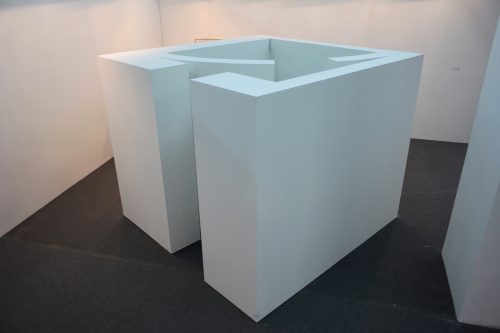
刘窗,13#,2012
木材,喷漆
240x240x200cm.
展览现场:中艺博国际画廊博览会,北京作品信息Information -

刘窗,14#,2012
混合媒介(方形空间、投影仪、Flash文件)
展览现场:当代唐人艺术中心,北京
作品信息Information -

刘窗,15#,2012
混合媒介(白立方、投影仪、Flash文件)
展览现场:泰康空间,北京作品信息Information -
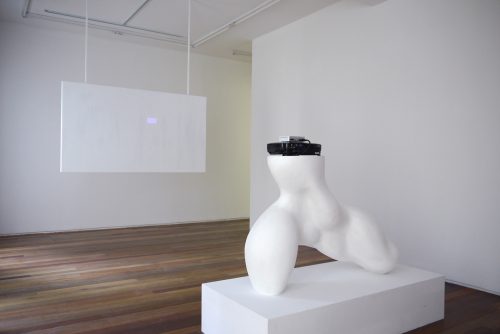
刘窗,16#,2012
屏幕、投影仪、视频文件、汉斯-阿尔普雕塑石膏仿制品
尺寸可变
展览现场:Leo Xu Projects,上海
作品信息Information -
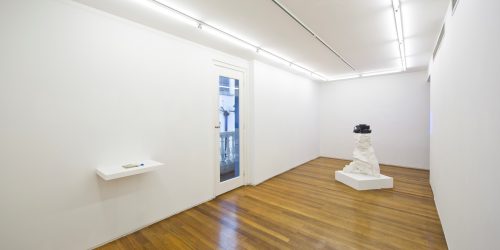
刘窗,17#,2012
屏幕、投影仪、视频文件、贝尔尼尼雕塑“海神”的石膏仿制品
尺寸可变
展览现场:Leo Xu Projects,上海
作品信息Information -

刘窗,18#,2012
投影仪、视频文件、门、乔治·万通格鲁雕塑“FRP”的仿制品
尺寸可变
展览现场:Leo Xu Projects,上海
作品信息Information -
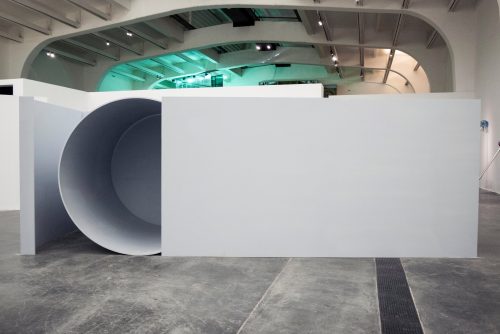
刘窗,无题(午夜航班),2013
钢结构
750 x 285 x 280 cm
展览现场:UCCA尤伦斯当代艺术中心,北京作品信息Information
作品
-

刘窗:锂矿湖与复音岛
2023年11月4日至2023年12月30日
-
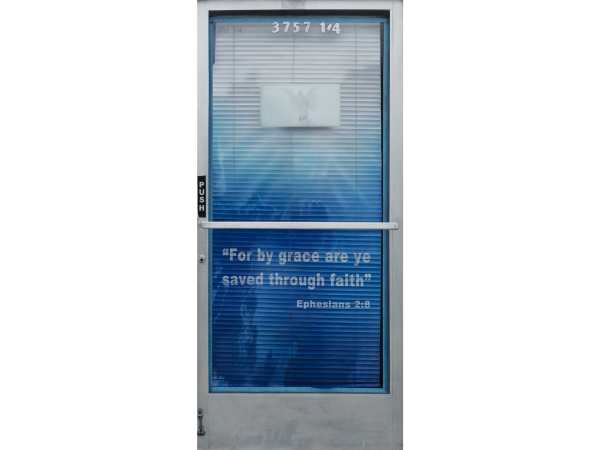
米修米修 收到信号了吗?
2023年9月16日至2023年10月25日
策展人:岳鸿飞(Robin Peckham)
参展艺术家:Korakrit Arunanondchai / Dora Budor / Hilo Chen 陈昭宏 / Xinyi Cheng 程心怡 / Cui Jie 崔洁 / Simon Denny / Daniel Dewar & Grégory Gicquel / Buck Ellison / Carolyn Forrester / Owen Fu / Sayre Gomez / Guan Xiao 关小 / Han Bing 韩冰 / Tishan Hsu 徐梯善 / Frieda Toranzo Jaeger / Allison Katz / KAYA (Kerstin Brätsch & Debo Eilers) / Matthew Lutz Kinoy / Josh Kline / Stanislava Kovalcikova / Heidi Lau 刘慧德 / Li Ming 李明 / Yong Xiang Li 李泳翔 / Liu Chuang 刘窗 / Jr-Shin Luo 罗智信 / Nancy Lupo / Mai Zhixiong 麦志雄 / Helen Marten / Alexandra Noel / Peng Zuqiang 彭祖强 / Tara Walters / Evelyn Taocheng Wang 王伊芙苓韬程 / Xie Nanxing 谢南星 / Joseph Yaeger / Yu Honglei 尉洪磊 / Yu Peng 于彭 / Zhao Gang 赵刚 / Zhou Siwei 周思维 -
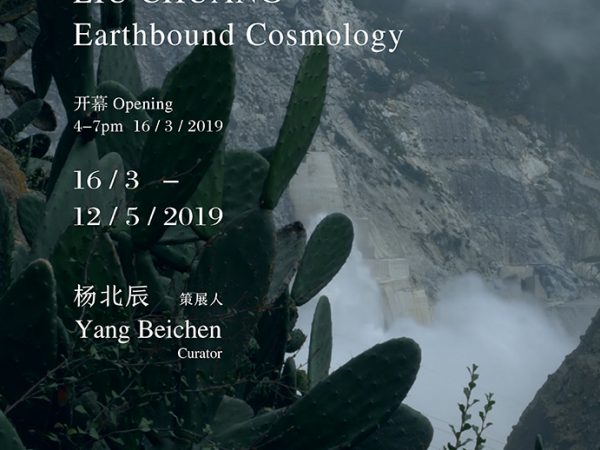
刘窗:在地宇宙
2019年3月16日至2019年5月12日
乔空间
上海市徐汇区龙腾大道 2555 号
展览
-

崔洁、刘窗、李明参展巴黎蓬皮杜艺术中心群展“目 China”
2024年10月9日至2025年2月3日
-
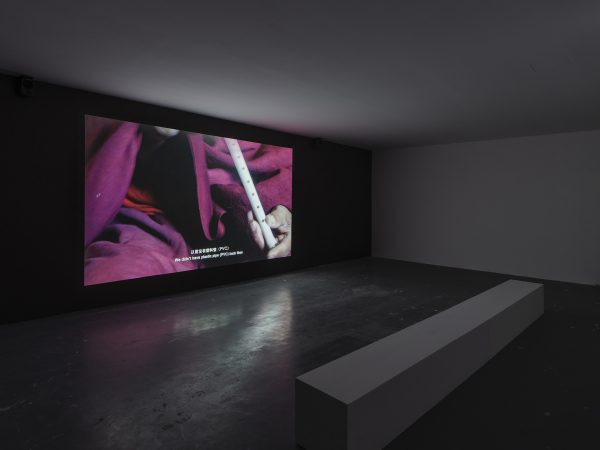
刘窗参加群展“无声之后”,明当代美术馆
2023年11月4日至2024年2月25日
-
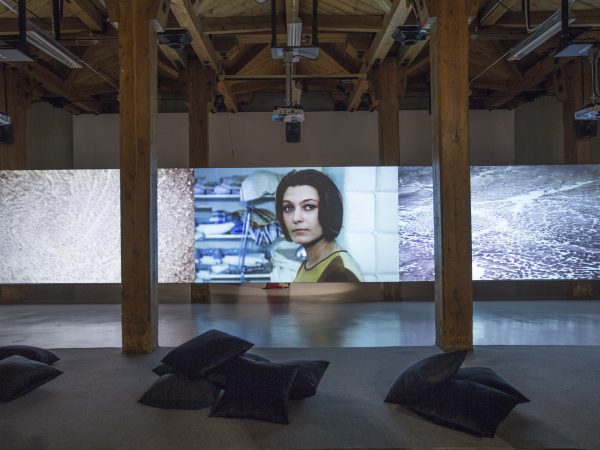
刘窗参加吕勒奥双年展(Luleå Biennia),瑞典
2022年10月15日至2023年1月15日
-

刘窗参加群展“国术”,雅典国立当代艺术馆(ΕΜΣΤ)
2022年6月17日至2022年10月30日
-
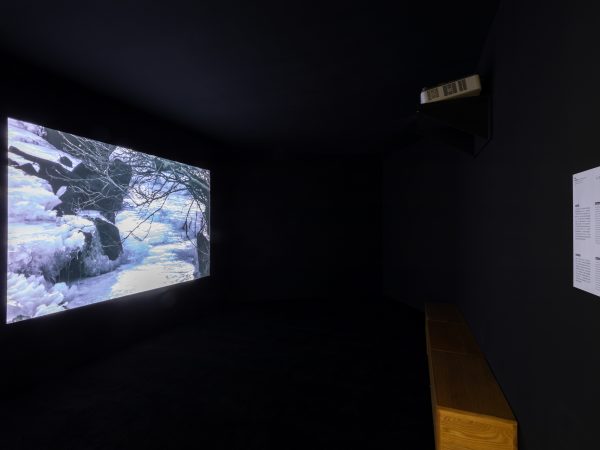
刘窗参加群展“身体·宇宙:共同生活的艺术”,谢子龙影像艺术馆
2022年4月30日至2022年8月28日
-
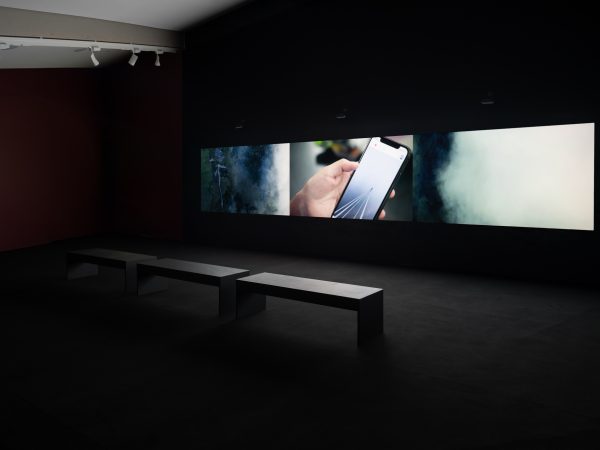
刘窗参加群展“INFORMATION (Today)”,奥斯陆阿斯楚普费恩利现代艺术博物馆
2022年2月4日至2022年4月24日
-
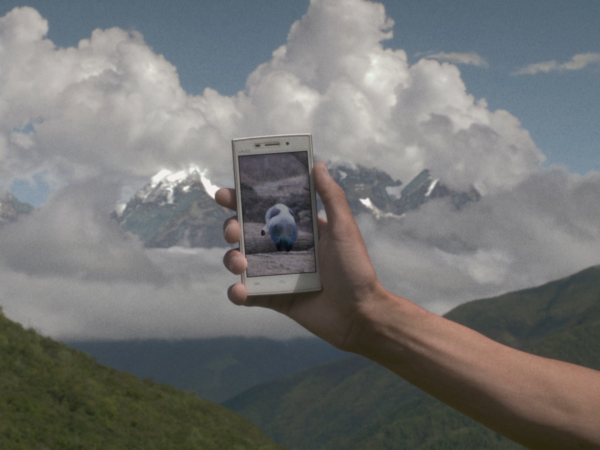
刘窗参加群展“自由爵士IV – 风水师”,南洋理工大学新加坡当代艺术中心
2022年1月14日至2022年1月23日
-
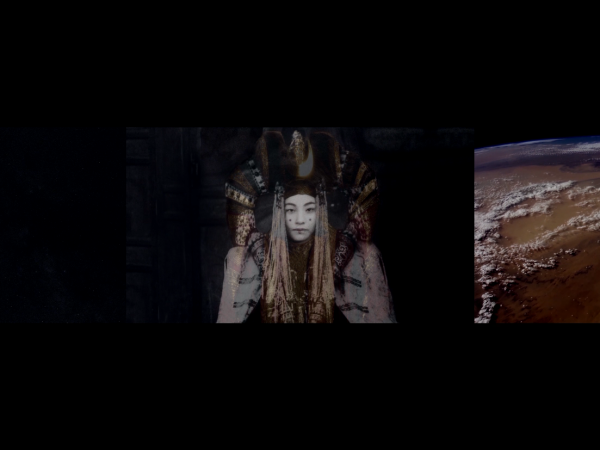
刘窗参加群展“2021泰国双年展:蝴蝶在泥上嬉戏”,Korat
2021年12月18日至2022年3月31日
-
,尺寸多变-600x450.jpg)
刘窗参加群展“城市乐园:泰康收藏精品展”,泰康空间
2021年11月30日至2022年1月20日
-
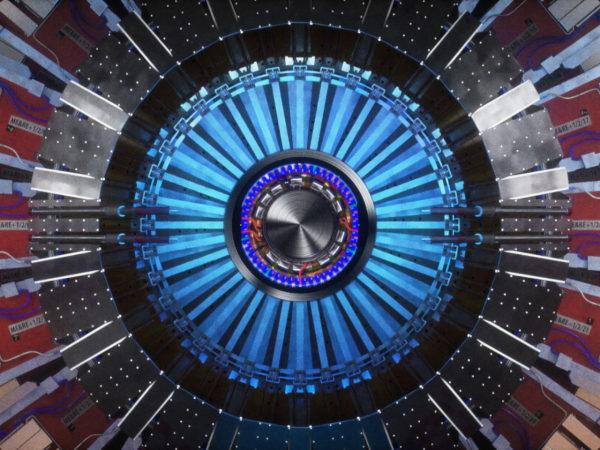
刘窗参加群展“2021年台北双年展巡回展:你我不住在同一星球上”,蓬皮杜艺术中心-梅茨馆
2021年11月6日至2022年4月4日
-
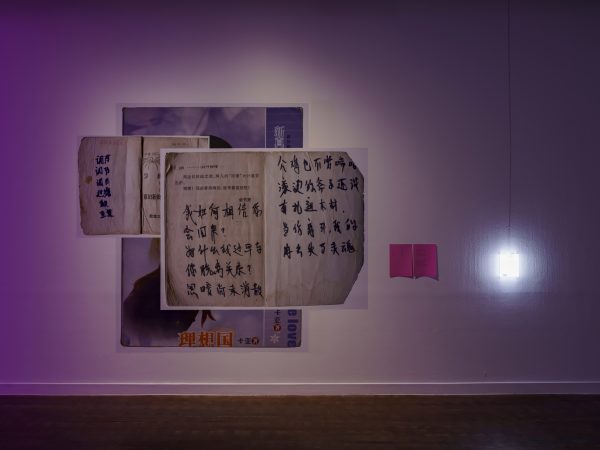
刘窗参加群展“第十一届首尔媒体城市双年展:一次逃脱”,首尔艺术博物馆
2021年9月8日至2022年11月21日
-
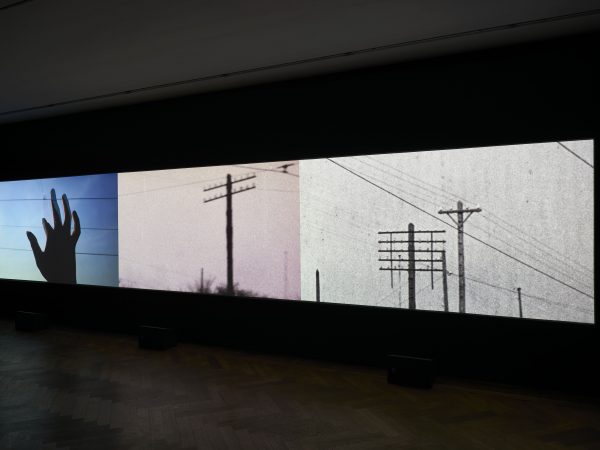
刘窗参加群展“INFORMATION (Today)”,巴塞尔美术馆
2021年6月25日至2021年10月10日
-
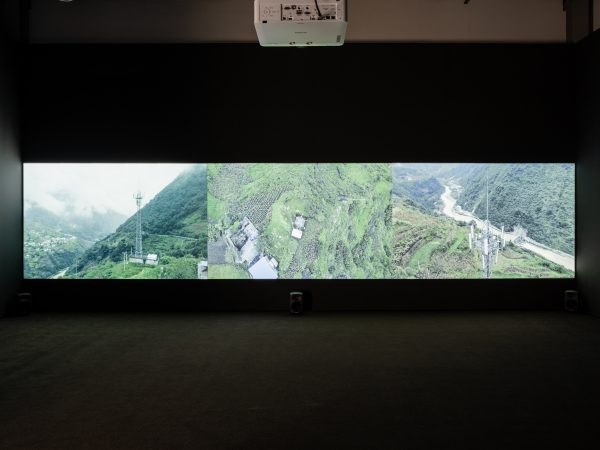
刘窗参加“Reclamation, New Rocks, Stray Dogs, and Acoustics of the Garden”,仁川艺术平台
2021年5月21日至2021年7月25日
-

刘窗参加“第十三届上海双年展:水体”,上海当代艺术博物馆
2021年4月17日至2021年7月25日
-
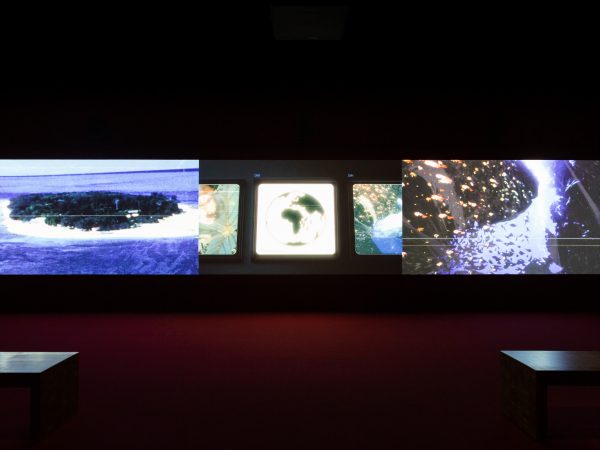
刘窗参加“2020台北双年展”,台北市立美术馆
2020年11月21日至2021年3月14日
新闻
-
Liu Chuang: Enjoy the Silence | ArtReview – 文:Mark Rappolt
2024-05-20
A new videowork by Liu Chuang, full of allegory and representation, posits an alien invasion against the beauty and lost opportunities of Earth and its dumb inhabitants.
-
刘窗:锂矿湖与复音岛 | 艺术世界 ArtReview – 文:沈逸人
2024-春
无论是从高原湖泊中提取锂元素的蒸发池和被迫迁徙的生物,抑或是在丝绸之路上缄默前行的僧侣,刘窗的创作都围绕危机驱动、时局变化中的地缘流动性展开。这些分布在地图各处的点位,就如同振翅的蛾子和地铁内手机设备的低振,看似毫无关联,却在百转千回中以微弱的连接共生。
-
Meet the artist-explorer Liu Chuang|文:李佳桓
He tackles bitcoin mining and engineered nature in his ambitious installations
Nestled in the Shanghai suburb of Songjiang, Liu Chuang’s studio is piled to the rafters with neatly organized books. Maps of various scales hang on the wall. Among the many charts and diagrams stuck to the shelves, I also spot a periodic table of elements. This scholarly setting recalls the office of a historian or a geographer more than an artist’s studio – and yet, over the past few years, Liu’s work has impressed the Chinese art milieu with an ever more interdisciplinary speculative practice that spans video, sculpture, and installation. Employing an expansive web of references that continuously stretches the discursive framework of his own work, the artist has also challenged the limits of Chinese contemporary art as a whole.
-
Cannibalised cultures and colonised territories|文:Mark Rappolt
One of the ways in which we assimilate the new is to insist that it is, in fact, old. Nothing comes from nothing, as the old saying goes. That certainly seems to be the case in Shanghai-based Liu Chuang’s three-channel videowork Bitcoin Mining and Field Recordings of Ethnic Minorities (2018). The work takes the form of found and filmed footage with a voiceover narrative that traces material and immaterial lines of power that have been deployed in China, over the past few thousand years, to conquer people and territories, and to generate material and immaterial profit. The narrative moves from economic inflation triggered in eastern China during the fifth century BCE, when King Jing of Zhou reduced the amount of copper in coins in order to fuel an obsession with creating enormous bronze chime bells, to nomadic bitcoin miners, operating outside any centralised banking system, herding their rigs across present-day China in harmony with the seasonal and regional variations in energy production.
-
In Focus: Liu Chuang|文:Paul Teasdal
Liu Chuang’s latest work, Segmented Landscape (2014), consists of six metal window grilles, each bearing a distinct geometric pattern. Installed above visitors’ heads in the main hall of the Power Station of Art, the venue for the 10th Shanghai Biennale, it is lit by spotlights while an artiȷcial breeze causes pieces of white gauze, hanging like curtains behind each grille, to shift gently. The shadows cast by the grilles appear as patterns transposed onto the fabric. The overall eȴect is of a series of photograms, which seems ȷtting since the work is, to some extent, a snapshot of China in the late 1980s and early ’90s, when such window guards suddenly began appearing on houses and apartments across the country. At that time, they could be seen as a visual reminder of China’s burgeoning prosperity; here, they seem a quiet lament to the individualization that has been a by-product of economic growth.
-
Love Story: Liu Chuang|文:Paul Laster
No stranger to the American art scene, Liu Chuang’s conceptual art has been featured in several outstanding group shows in the United States, including “The Generational: Younger Than Jesus” (2009) at New York’s New Museum, “28 Chinese” (2013) at Miami’s Rubell Family Collection, and “My Generation: Young Chinese Artists,” which recently debuted at the Tampa Museum of Art as well as the Museum of Fine Arts, St. Petersburg.
